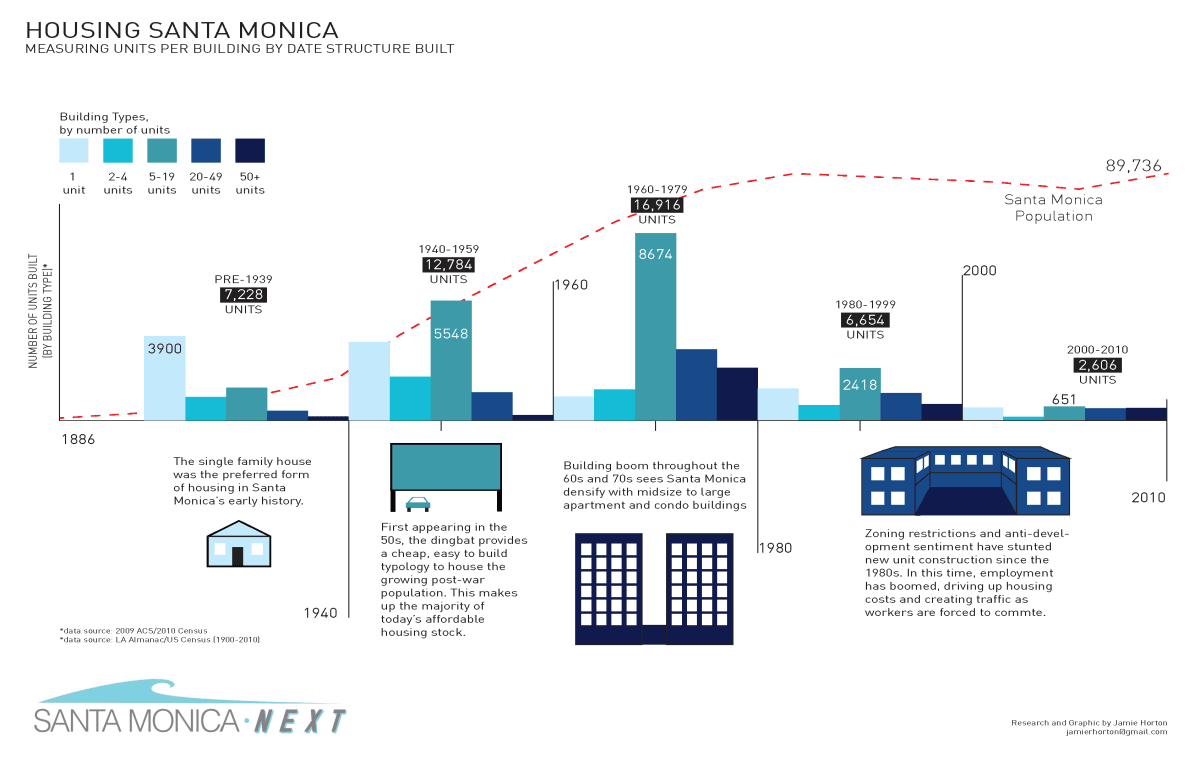If you’ve tried to move to — or within — Santa Monica recently, it should come as no surprise to you that it’s not easy.
While the entire Los Angeles region is enduring the consequences of a chronic 30-year-long housing shortage, Santa Monica’s shortage is particularly acute, and it’s dramatically driving up the cost of living.
According to the U.S. Census Bureau’s American Community Survey (ACS), over the last five years, the vacancy rate for rental units in the city has averaged about 2.8 percent, meaning that at any given time in the city less than three percent of rental units are on the market for new tenants. The rest are either occupied or have been taken off the market for other reasons. By comparison, San Francisco’s vacancy rate in 2014 was 2.5 percent, Los Angeles’ was 3.4, and Detroit was 7.5, according to the ACS.
“Such a low vacancy rate tends to signal a very tight rental market, with high demand for apartments and more latitude for apartment owners to increase rents,” said Andy Agle, Santa Monica’s director of housing and economic development.
“Anyone who has been in the rental market in Santa Monica recently has likely experienced the high demand and high rents,” he said. “The 2015 median market rent for a two-bedroom apartment built before 1979 was $2,750 per month. A household would need an annual income of $110,000 per year to afford the apartment without being burdened by the rent.” Burdened by rent is defined as spending more than a third of your income on rent.
Said Agle, “Rents for newer apartments are even higher and require even higher incomes to avoid rent burdens.”
Recently, supporters of the Residocracy-backed L.U.V.E. initiative, which would create a de facto height limit on most new construction over 32 feet by requiring a popular vote on most such projects, have argued that the vacancy rate in Santa Monica is actually as high as eight percent. While that’s true if you include both apartments and homes for sale, what matters for renters — and Santa Monica is 70 percent renters — is the vacancy rates of rentals. While there are also almost always vacant rental units that landowners have taken off the market, those do little good for people looking for a place to live.
The most recent data available through the ACS actually shows that, in 2014, the estimated rental vacancy rate in Santa Monica was 0.1 percent, which is eye-poppingly low. If that figure is correct, and Agle cautioned that it seemed too low to be accurate because it may have been drawn from a low sample size, it would mean that in 2014 there were nearly no rental units on the market.
Even so, it remains clear to anyone house hunting in Santa Monica that the rental market is incredibly restricted and has been for some time.
In his recent op-ed piece for The Los Angeles Times, urban planner Shane Phillips writes, “Most experts agree that a 5% vacancy rate is the point where the power dynamic between tenants and landlords shifts. Above 5%, landlords need to offer incentives or lower rents to be competitive; lower than that, landlords know if a tenant leaves, there are half a dozen more clamoring to take her place. According to reports from the USC Lusk Center for Real Estate, multifamily vacancies in Los Angeles have been under 5% for nearly five years.”
In Santa Monica, the power has been in the hands of property owners for at least five years, if not longer.
Phillips argues that it is, in fact, not the building of new, luxury housing that is the problem, since he compares communities in L.A. County with wildly divergent new housing growth rates and finds that places where virtually no new housing is getting built housing costs are skyrocketing.
As a recent study by the nonpartisan Legislative Analyst’s Office shows, housing growth can actually help keep housing costs down, but only if the growth helps increase the local vacancy rates. Even if new apartments rent at high rates when they first come online, rents in older buildings can be stabilized or even lowered.
As buildings built today age and even newer buildings continue to be built, the rents in the once-luxury housing begin to drop off.
While even older building stock in Santa Monica will cost you, as Agle noted, it will still cost you less than an apartment in a newer building. The older apartments would likely cost even less if the vacancy rate were higher, but according to the ACS, the median rental unit was built in 1967, nearly 50 years ago during Santa Monica’s last significant housing boom. The high age of the median rental building illustrates just how little new housing has been built in the city in recent history.

Still, Santa Monica has been building some housing in its downtown in recent years, which should help alleviate the upward rent pressures on older units in existing neighborhoods, and the city plans to continue to allow modest growth outlined in the Downtown Community Plan.
However, Santa Monica has also had no lack of opposition to new housing growth, even where new housing would not have displaced existing tenants. And, if housing growth is somehow restricted in its ability to allow more new housing to be built, it’s likely that the city housing shortage will escalate and our future — along with our vacancy rates — may begin to look a lot more like San Francisco’s.
